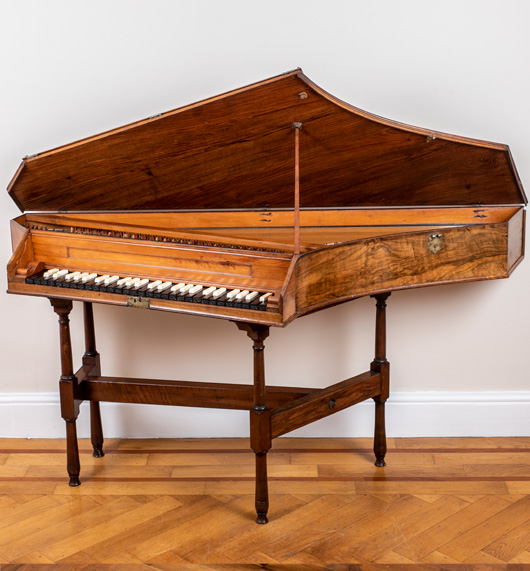Bentside spinet by Cawton Aston, London, c1700
Compass: GG/BB (short octave with divided accidentals) - d'''
Disposition: 1x8'.
Plectra material: bird quill.
Compass: GG/BB (short octave with divided accidentals) - d'''
Disposition: 1x8'.
Plectra material: bird quill.

The attribution of this spinet to Cawton Aston is made on the basis of the letters ‘CA’ which appear written in ink on the lowest bass key lever. Small single-strung spinets like this example were introduced to England, possibly from Italy via France, around the time of the Restoration of King Charles II and superseded the native rectangular virginals as a conveniently proportioned domestic keyboard instrument. Indeed, Cawton Aston is among several recorded makers traceable to the English virginals-building tradition through his master, John Player. Popularised initially by the aristocracy and gentry, and often depicted in early 18th century portraits, these newly fashionable and affordable instruments soon found a market among the burgeoning and aspiring English middle class, in whose modest homes they could be comfortably accommodated. Samuel Pepys provides perhaps one of the earliest references to the type in his diary of the 1660s, having bought one for the purpose of better understanding harmony. Used for the accompaniment of the voice, dancing and in ensemble roles, the spinet became an established chamber instrument and was subject to developments throughout the 18th century. Early examples like this spinet are particularly well suited to the solo works of Locke, Purcell, and their contemporaries.
To visit a musical museum without music is like visiting an art gallery with your eyes closed
Richard Burnett